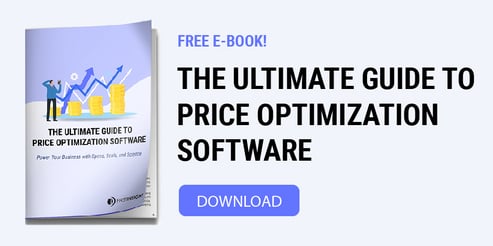The retail industry faces numerous challenges in today’s rapidly changing market, and among the most pressing are inventory management issues. The inventory glut and the bullwhip effect are two key factors contributing to these challenges. This blog post will discuss how these problems arise in the retail sector and explore their impact on retailers and the supply chain.
What is the Bullwhip Effect?
The bullwhip effect is an imbalance between supply and demand that occurs when incorrect demand information flows through the supply chain. This effect comes from how a whip amplifies in motion from the handle to the tip, like how these fluctuations grow in magnitude as they move up the supply chain. Each step in the process amplifies this effect because each party assumes that its information about the request is accurate, causing it to make decisions based on that inaccurate information.
Why Does the Bullwhip Effect Happen?
Several factors contribute to the bullwhip effect in retail, including the following:
Demand forecasting errors – Retailers often rely on historical sales data to predict future demand. Inaccurate forecasts can lead to over-ordering or under-ordering from suppliers, causing fluctuations throughout the supply chain.
Order batching – Companies may place large, infrequent orders to save on transportation and ordering costs, which can result in variability in the supply chain.
Price fluctuations and promotions – Special promotions or discounts can lead to temporary demand spikes, causing retailers to over-order and leading to excess inventory when the promotion ends.
Lead time variability – Longer and varying lead times for product deliveries can exacerbate the bullwhip effect, as companies may order more stock to compensate for uncertainty.
Inventory Glut: The Consequences of Excess Stock
Inventory glut occurs when retailers have excess products not moving at the expected rate. This can happen due to various reasons, such as inaccurate demand forecasting, over-optimistic sales projections, or changes in consumer preferences. An inventory glut can have several negative results for retailers, including:
Increased holding costs – Retailers must bear the costs of warehousing, handling, and insuring excess inventory, which can quickly erode profit margins.
Obsolescence – Products may become outdated or spoiled over time, leading to markdowns or write-offs that negatively impact bottom line.
Lost opportunities – Excess inventory ties up cash that could be used for other investments or growth initiatives.
Retailer Examples of Inventory Glut
Target announced in 2022 that its quarterly profits took a hit because they had stocked up on too many of the wrong products. The company had to cancel orders and try to move the excess inventory by slashing prices. Macy’s acknowledged that they hadn’t anticipated the consumer moving away from casual clothes, appliances, and home décor items as quickly as they did and that they, too, have too much of the wrong merchandise. Retailers are giving back their profits from the past several years due to a combustible combination of rising labor costs, ongoing supply chain issues, and inflation mixed with consumers’ desire to leave their houses and start spending on experiences again.
Old Navy reported the same outcome—too much merchandise—but for a different reason. The consumers were shopping but could not find the size in their desired styles. To be more size-inclusive, the retailer had started producing all its apparel in every size, including what used to be called plus sizes. While this is an admirable way to promote body positivity, it’s a terrible way to do business unless the margin hit is charged to the Marketing or CSR department. Producing larger-sized clothes is more expensive—primarily because they require more fabric. Then these more costly items didn’t sell through because the size assortment wasn’t aligned with consumer demand. Not enough “middle” sizes were ordered, which meant that most consumers had only very small or very large items to choose from when they got to the store. The Old Navy scenario has created multiple problems, from disappointing the customer to disappointing Gap’s shareholders.

Strategies for Addressing the Bullwhip Effect and Inventory Glut
Situations like Target or Old Navy could have been avoided with the right tools and strategies. To mitigate the challenges posed by the bullwhip effect and inventory glut, retailers should consider the following methods:
- Improve demand forecasting – Retailers should invest in predictive analytics and data-driven tools to enhance the accuracy of their demand forecasts. Real-time data, market trends, and consumer behavior insights can enable businesses to make more informed ordering and inventory management decisions.
- Collaborate with supply chain partners – Enhanced communication and collaboration with suppliers, distributors, and manufacturers can help reduce the bullwhip effect. Sharing demand forecasts, sales data, and inventory information can help all parties better anticipate and respond to fluctuations in consumer demand.
- Optimize pricing and promotional strategies – Retailers should carefully plan and manage promotions to minimize the risk of excess inventory. Understanding consumer behavior will help retailers adjust their marketing strategies to align supply with demand better.
- Utilize zero-party data – Proactively collecting customer information can give retailers valuable insight into customers' preferences and behavior, which they can use to improve marketing, product development, and the overall experience.
The Supply Chain Solution for Retailers
Applying AI, demand forecasting, and product optimization tools will help retailers remain competitive, even in challenging market conditions. The world moves so quickly today that retailers must rely on more than instinct and last season’s sales results to stay ahead of the next market disruption.
InsightSUITE is a one-of-a-kind system that offers forward-looking insights. These insights are crucial for making informed supply chain decisions concerning optimal buy depths, allocation adjustments, and in-season plans, ultimately allowing you to optimize inventory levels and maximize revenue. Leveraging zero-party consumer data lets you forecast potential winners and losers, identify unique customer reach, and optimize product assortments. Learn more about our supply chain solutions and how they can help avoid inventory issues.














